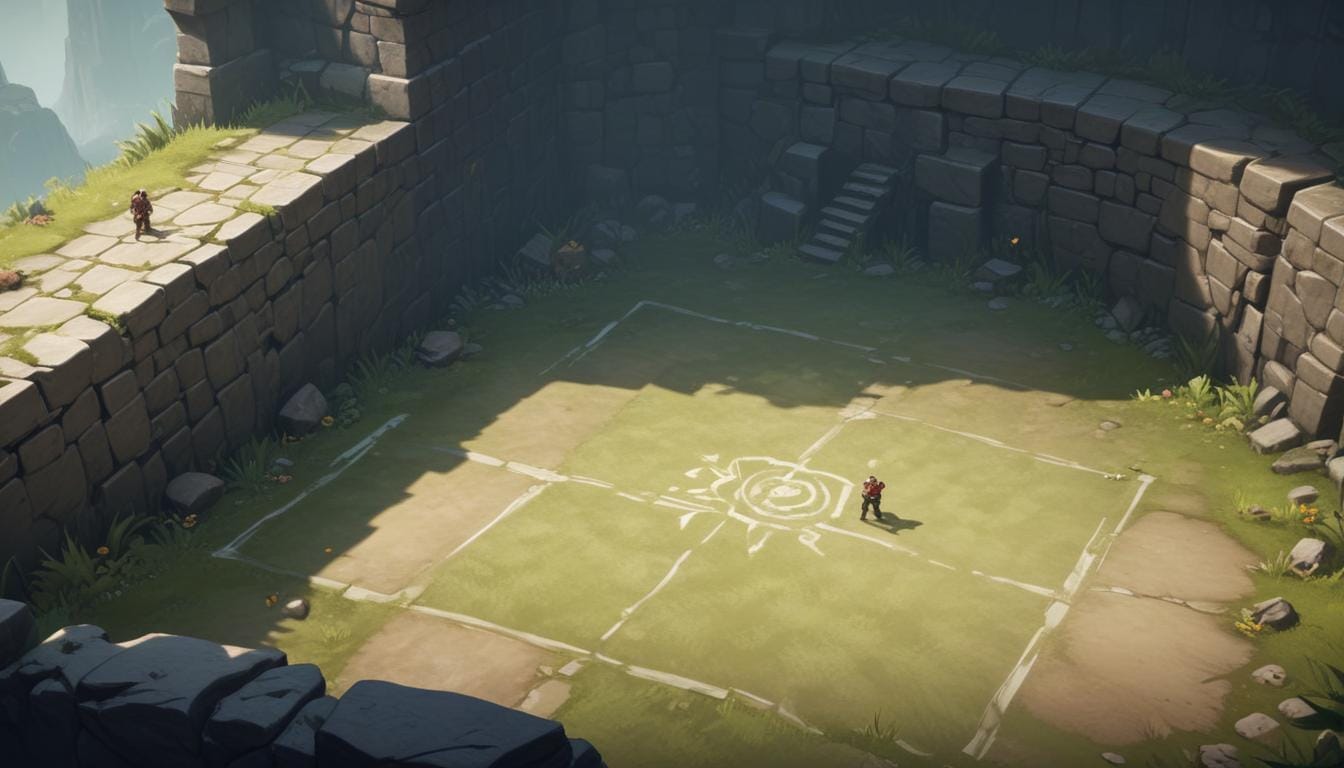Welcome to the exciting world of game design! Creating a captivating and engaging game is a rewarding endeavor, but it can also be a challenging and complex process. As a game designer, you hold the power to craft immersive experiences that captivate players and leave a lasting impact. However, even the most talented designers can stumble upon common pitfalls that hinder the success of their creations.
In this blog post, we will delve into the realm of game design, shedding light on some of the most prevalent pitfalls that designers often encounter during their journey. From concept development to user experience, we’ll explore expert tips and strategies to help you navigate these challenges and increase your chances of creating a remarkable game.
Whether you’re a seasoned game designer or a passionate newcomer, understanding these pitfalls and learning how to avoid them will elevate your design skills and set you on a path to success. So, let’s dive in and uncover the secrets to sidestepping common game design pitfalls with the help of expert advice!
Game Design Pitfalls
let’s review some of the most notorious game design pitfalls committed by game designers:
1. The importance of game design in the gaming industry
Game design is an art form that requires careful planning, creativity, and attention to detail. However, even the most experienced game designers and developers can fall into common pitfalls that can hinder the success of their projects. From poor level design to lack of player engagement, there are many factors that can make or break a game. In this blog, we will explore some of the most common game design pitfalls and provide expert tips on how to avoid them. Whether you’re a seasoned game designer or an aspiring indie game developer, this article is packed with valuable insights to help you create successful and engaging games.

2. Understanding common game design pitfalls and their consequences
Understanding the common game design pitfalls and their consequences is crucial for any game designer or developer. By recognizing these pitfalls, you can effectively avoid them and create successful and engaging games.
One common pitfall is poor gameplay balancing, where the difficulty level of a game is either too easy or too difficult. This can result in players losing interest or becoming frustrated. Another pitfall is a lack of clear objectives or goals, which can leave players feeling confused and uncertain about what they need to accomplish.
Moreover, an inconsistent art style or theme can also hinder the overall experience of a game, as it can create a disjointed and incoherent visual presentation. Lastly, inadequate playtesting or ignoring player feedback can lead to missed opportunities for improvement and missed chances to address potential issues before release.
In the next section, we will delve deeper into these pitfalls and discuss strategies and tips to avoid them. Stay tuned and learn how to overcome these challenges and create games that captivate and engage players from start to finish.

3. Setting clear goals and objectives for your game design
As mentioned earlier, one of the common pitfalls in game design is a lack of clear goals and objectives. Without clear direction, players can feel lost and uncertain about what they need to accomplish. Setting clear goals and objectives is essential for providing a sense of purpose and progression in a game.
To avoid this pitfall, start by defining specific objectives that players need to achieve to progress in the game. These objectives should be challenging but attainable, providing a sense of reward and accomplishment. Make sure these goals are communicated clearly to the players through in-game instructions or tutorials.
Additionally, consider incorporating a narrative or storyline that serves as a guiding force for players. By intertwining objectives with the narrative, you create a more immersive and engaging experience.
Regularly test your game with a focus group to ensure that the goals and objectives are clear and easily understandable. Gather feedback from players and make necessary adjustments based on their input. Remember, clear goals and objectives are key to keeping players engaged and motivated throughout the game.

4. Conducting thorough market research and competitor analysis
Conducting thorough market research and competitor analysis is another important aspect of game design that can help you avoid common pitfalls and increase your chances of success.
Understanding your target audience and the current market trends is crucial in ensuring that your game stands out and appeals to players. Conducting market research will provide insights into player preferences, popular game genres, and emerging trends. This information can help you make informed decisions regarding game mechanics, visuals, and overall design.
Additionally, analyzing your competitors’ games can give you valuable insights into what works and what doesn’t in the market. Take note of the features that players enjoy, as well as any shortcomings or issues that you can improve upon. This will help you differentiate your game from the competition and offer a unique and compelling experience to players.
By conducting thorough market research and competitor analysis, you can identify gaps in the market and make strategic decisions that will set your game up for success.
5. Emphasizing playtesting and gathering feedback from target audience
Emphasizing playtesting and gathering feedback from your target audience is another crucial step in avoiding common game design pitfalls and ensuring the success of your game.
Playtesting allows you to get valuable insights into how players interact with your game and identify any issues or areas of improvement. By observing playtesters navigate through your game, you can gain a better understanding of the user experience and make necessary adjustments to enhance gameplay.
In addition to playtesting, gathering feedback from your target audience is essential for refining your game. This can be done through surveys, focus groups, or even engaging with players on social media platforms. By listening to their opinions and suggestions, you can make informed decisions on improvements and address any concerns or issues.
Remember, your target audience is the ultimate judge of your game’s success. By placing importance on playtesting and gathering feedback from them, you can make necessary tweaks and ensure that your game meets their expectations.
6. Balancing game mechanics and difficulty levels for optimal player experience
Creating a balanced and engaging gameplay experience is key to capturing and retaining the attention of your players. One common pitfall in game design is either having overly complex mechanics or a difficulty level that is too easy or too difficult. Finding the right balance is crucial.
When designing your game mechanics, make sure they are intuitive and easy to understand. Avoid overwhelming players with too many rules or convoluted systems. Simplify where possible and focus on creating a smooth and seamless gameplay experience.
Similarly, consider the difficulty levels of your game. Gradually ramp up the challenge to avoid frustration, and provide players with a sense of accomplishment as they progress. Balancing is an iterative process, so take advantage of playtesting and gathering feedback to fine-tune your game’s mechanics and difficulty levels.
Remember, a well-balanced game will keep players entertained and coming back for more, ensuring the success of your game in the long run.
7. Nurturing creativity and innovation in game design process
Nurturing creativity and innovation in the game design process is essential for creating unique and captivating games. It is important not to fall into the trap of relying solely on existing ideas and mechanics. Instead, encourage your team to think outside the box and explore new concepts.
One way to foster creativity is to create a collaborative environment where all team members feel comfortable sharing their ideas. Encourage brainstorming sessions and provide a platform for open communication. Remember, great ideas can come from anyone, so make sure everyone’s voice is heard.
Additionally, don’t be afraid to experiment and take risks. Encourage your team to try out new gameplay mechanics, art styles, or narrative approaches. Embrace failures as learning opportunities and use them to refine and improve your game.
By nurturing creativity and innovation, you can create games that stand out in a crowded market and provide players with truly unique and memorable experiences.
8. Collaborating with a diverse team of experts in different areas of game development
Collaborating with a diverse team of experts in different areas of game development is another key aspect of avoiding common game design pitfalls. Each team member brings their unique expertise and perspective, which can greatly enhance the overall quality of the game.
Having professionals in various disciplines such as programming, art, sound design, and level design can ensure that every aspect of the game is well-crafted and cohesive. It is essential to foster open communication and create an environment where team members can freely share their ideas, concerns, and feedback.
By working together, you can leverage the strengths of each team member to create a game that not only meets the technical requirements but also delivers an engaging and immersive experience for the players. Remember, collaboration is the key to success in game design, so embrace the expertise of your team members and leverage their diverse skills.
9. Utilizing analytics and data-driven decision making to improve game design
In today’s competitive gaming industry, it is crucial to make informed decisions that will resonate with your target audience. This is where the power of analytics and data-driven decision making comes into play. By analyzing player behavior, preferences, and engagement metrics, you can gain valuable insights that will inform your game design choices.
Utilizing analytics tools and tracking systems can help you monitor how players interact with your game, highlighting areas of improvement and identifying potential pain points. For example, you can measure player retention, track in-game purchases, and analyze player feedback to understand what aspects of your game are working well and what needs adjustment.
Data-driven decision making goes beyond guesswork and intuition, allowing you to make informed choices based on concrete evidence. By leveraging analytics, you can refine your game design, improve player satisfaction, and ultimately increase engagement and revenue.
Stay tuned for our next blog section, where we will explore the importance of playtesting and user feedback in the game design process.
10. Maintaining a flexible and iterative approach to game design
Maintaining a flexible and iterative approach to game design is another essential aspect of avoiding common pitfalls in the industry. Game development is a complex and evolving process, and it is crucial to remain open to change and adapt as necessary.
One important aspect of a flexible approach is constantly seeking and incorporating user feedback throughout the game design process. By involving your target audience early on and incorporating their input into your design decisions, you can create a game that resonates with players and addresses their needs and desires.
Additionally, it is essential to iterate on your game design. This means continuously refining and improving your game based on feedback, analytics, and testing. By adopting a mindset of continuous improvement, you can ensure that your game remains relevant and engaging to players.
In the upcoming blog section, we will delve deeper into the crucial role that playtesting plays in game design, and how it can help you create a more refined and enjoyable gaming experience.
Conclusion: Avoiding Common Game Design Pitfalls
In conclusion, maintaining a flexible and iterative approach to game design is vital for avoiding common pitfalls and achieving success in the industry. By seeking and incorporating user feedback throughout the design process, you can create a game that resonates with players and addresses their needs. Iterating on your design based on feedback, analytics, and testing allows for continuous improvement and ensures your game remains relevant and engaging.
In the next blog section, we will explore the crucial role of playtesting in game design. We will discuss how playtesting can help you identify and resolve issues, refine your game mechanics, and create a more enjoyable gaming experience. Stay tuned for expert insights and valuable tips on how to conduct effective playtesting sessions and make the most out of this essential design process.
If you to learn more on Lessons learned from game designers and other errors associated with game design, then check our blog.
Frequently Asked Questions(FAQ) Avoiding Common Game Design Pitfalls
Q: What are some common game design mistakes to avoid?
A: Common game design mistakes include not understanding the target audience of your game, not creating a prototype, not using source control, and not finding your target audience.
Q: Why is it important to understand the target audience of your game?
A: Understanding the target audience of your game is crucial in game development because it helps you tailor the game to their preferences and create an enjoyable experience for them.
Q: What are some tips for finding your target audience?
A: To find your target audience, you can conduct market research, engage with potential players on social media, attend gaming conventions, and analyze the demographics of similar games.
Q: What should I consider when creating a prototype?
A: When creating a prototype, you should focus on the core mechanics and gameplay of your game, rather than wasting time on detailed graphics and assets.
Q: Why is using source control important in game development?
A: Using source control allows you to keep track of changes made to your game’s code and assets, making it easier to revert to previous versions and collaborate with other developers.
Q: What are some common game design mistakes made by new game developers?
A: Common game design mistakes made by new game developers include prioritizing graphics over gameplay, not playtesting their game enough, and trying to create a big game without enough resources.
Q: What are some common game design mistakes made by beginner game designers?
A: Beginner game designers often make mistakes such as not having a clear goal for their game, not considering the target audience, and not properly pacing the game’s difficulty.
Q: How can I make the game more immersive for players?
A: To make the game more immersive, you can focus on creating a rich and detailed game world, incorporating cinematic elements, adding interactive NPCs, and allowing players to make meaningful choices.
Q: What should I do if players don’t like my game?
A: If players don’t like your game, seek feedback from them and analyze the reasons for their dissatisfaction. Use this feedback to improve your game and address the issues raised.
Q: What is mobile game development?
A: Mobile game development refers to the process of creating video games specifically for mobile devices such as smartphones and tablets.






















